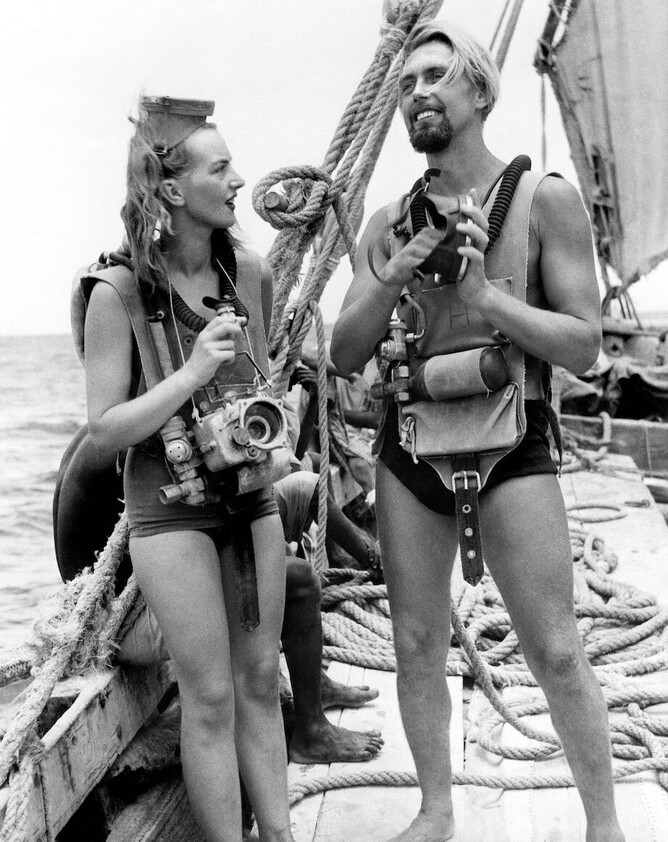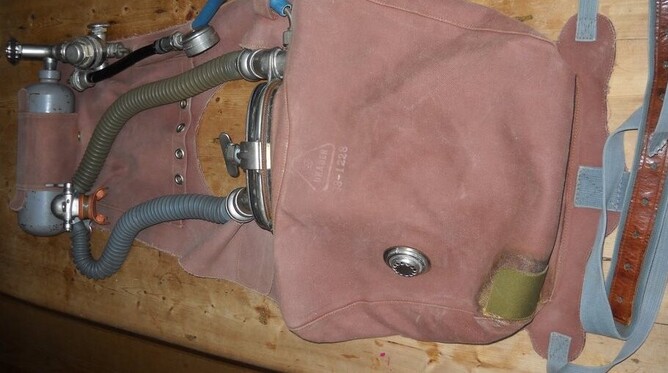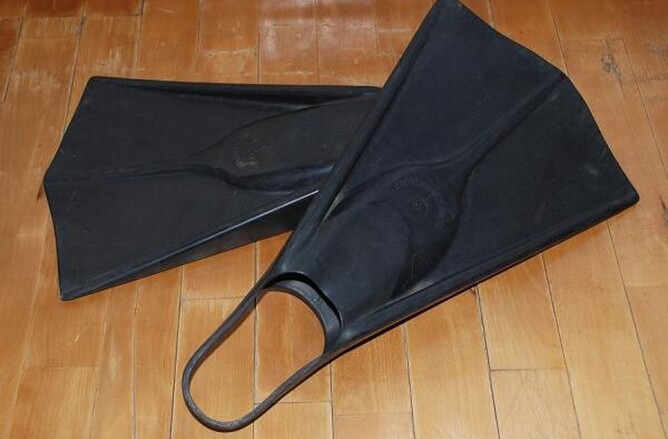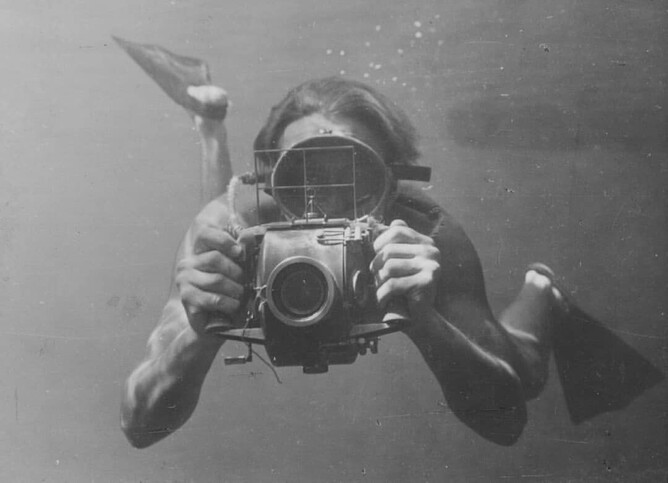Lord of the sharks
Hans Hass was a Viennese pioneer of diving, marine biology and underwater film making. He was born January 23, 1919 in landlocked Austria. As the son of a lawyer, he first encountered the underwater world as an eighteen-year-old in 1937 during holidays to the south of France. From that day forth, his life was sealed.
He is now known as among the first to introduce worldwide audiences to the stunning beauty of coral reefs, stingrays, octopuses and sharks — especially sharks, which he considered the most beautiful and most maligned ocean creatures.
As a young man he was fascinated by the mysterious and unknown, including the ocean, not only shrouded in mystery but considered dangerous at the time, remember in the 1930s, much less was known about the ocean compared to what we know today. There were still rumours about sea snakes, man eating sharks and other monsters of the ocean.
Hans entered the ocean armed with diving goggles and a spear and found a fairytale world that wouldn’t let him go. His friends in Vienna, whom he told about his experiences, wouldn’t believe him, so in 1938 he made his first underwater camera to document his adventures. He experienced things no one else had seen before because research scientists were too afraid to explore the reefs. This was to be the beginning of underwater photography.
Hass published "Diving to Adventure," his first book of underwater photographs, in 1939 (some credit him with developing one of the first underwater cameras) and released his first underwater film, “Stalking Under Water,” a year later. The film was published by "Universal Film AG" originally lasting only 16 minutes and was shown in cinemas before the main film (but would eventually be extended by additional filming done in the Adriatic Sea).
At first a sporting daredevil, he soon turned to serious scientific work, but his actual aim went further: The almost shocking idea of encouraging scientists (mostly older, honourable gentlemen at the time) to shark-contaminated areas and that with proper (dive) equipment, one could bring valuable, new scientific discoveries.
In 1941 he moved from Vienna to Berlin and was excused from serving in the German military during the second world war because of poor circulation in his feet (caused by Raynards disease). During this time he gave over one hundred lectures, introducing the new research methods and managed to save enough money to purchase and equip a research vessel (named the Seeteufel). However, he was not able to use the ship for his planned expedition due to the war that was looming.
Until the end of the war Hass lived and worked in the film studios of Universum Fim AG to finish his film about an expedition in the Aegean Sea. This 84 minute underwater film, Menschen unter Haien (Men among Sharks), was released in 1947. It shows marine life including wrasse, jellyfish, sponges, sea anemones and rays. The highlights of this film included dynamite fishing practises and interaction of divers with sharks.
By his own efforts Hans Hass bought a ship, equipped it, and (eventually) went on two long expeditions in the Pacific and Indian Oceans. The scientific results of those trips went down in history and made Hans Hass famous. From that time forth, he shot innumerable films, wrote books, gave lectures, winning many awards for his underwater photography. Here was an example of what a single, dedicated person could achieve.
Hans is also known as being a pioneer in dive equipment. During 1943 at the Faculty of Biology his thesis was the first scientific research project that used an autonomous rebreather diving equipment. In his early diving the Rebreathers he used were developed by Hermann Stelzner and made by the German diving gear manufacturers Drager. These sets were custom made with the breathing bag on his back, as Hans did not like the bag-on-chest "frogman look". Hass and his team of researchers logged over 2000 dives utilising oxygen rebreathers from 1942 to 1953.
As well as being a pioneer in underwater photography and photographic equipment, in 1949 he had manufactured his own fins known as System Hans Hass swim fin. These were designed by Hans Hass and manufactured from 1949 by Semperit of Vienna. Later in 1956 he patented a new fin design known as the "Superfish". Hans also was instrumental in the development of early SCUBA gear and tools he needed to perform effectively underwater and to communicate the importance of ocean awareness and understanding, "I wanted to move like a fish among the fishes," he often said.
Lord of the sharks
Hans published 32 books and produced 73 films during his career on the seas and condensed his behavioural research into a hypothesis he called the Energon theory, which was the focus of his work in later years. The theory explains that the behaviours of all life-forms - human, nonhuman animal and vegetable have common origins. The theory emerged from his book “We Come From the Sea” (1957), describing his affinity with sharks.
Throughout his life Hass campaigned for marine life and especially sharks earning him the nickname of "Lord of the Sharks". Looking back over his career it is fair to say he was a pioneering advocate for our oceans. Hass consistently campaigned for a better reputation for sharks, seeking to remove their stigma as savages of the sea. He released films including "People among sharks," and books like "Among the corals and the sharks" or "The shark – the legend of a murderer" to seek to improve awareness on the animals. Hass claimed to have had more than 2000 close shark encounters but to have "only been attacked five times".
Hans gave up diving in 1961 to pursue behavioral and anthropological research. In 1966, he hosted and narrated Wir Menschen (1966), a look at humanity from an outside perspective. In 1999, he set up the International Hans Hass Institute for Energon-Cybernetic Research at the University of Vienna. Hass died in his home town in June 2013 at the age of 94.
The Hans Hass legacy will live on with all divers who shared his amazing adventures through his books, films and public presentations.
Aotearoa Dive is very proud to own an original copy of “We Come From the Sea” in our vintage scuba library, so why not pop into the shop and have a browse over a coffee? Sea you soon...




